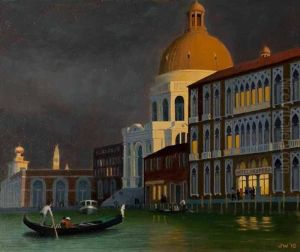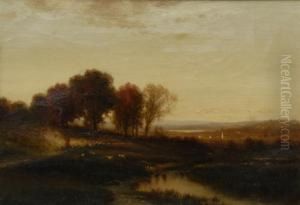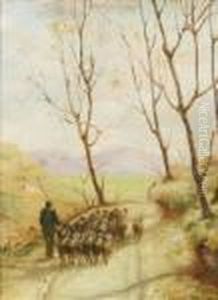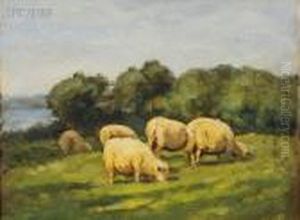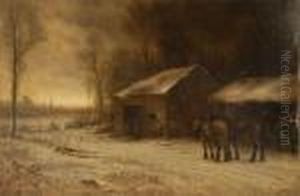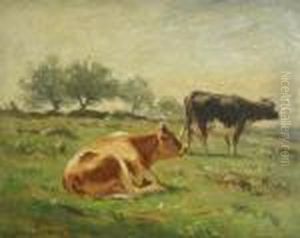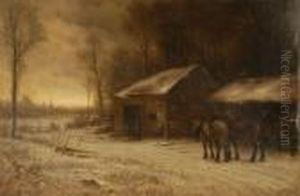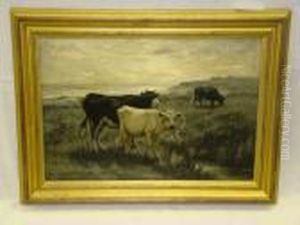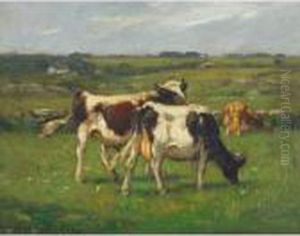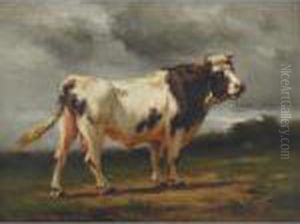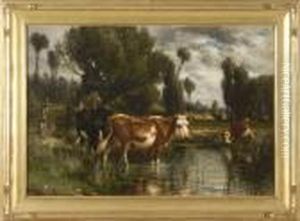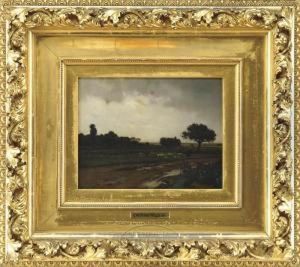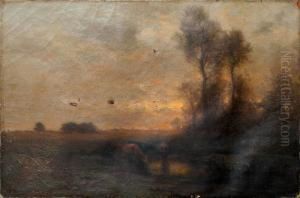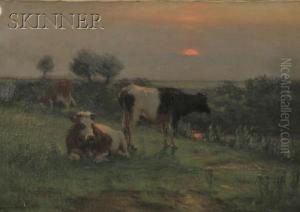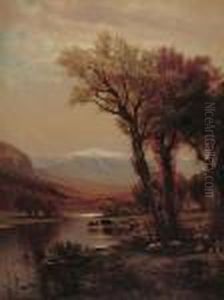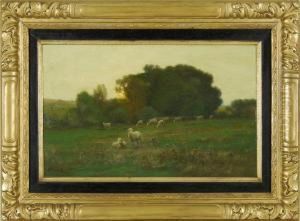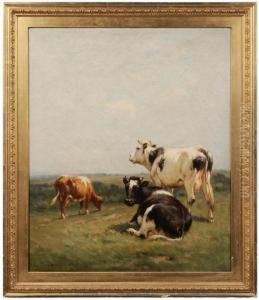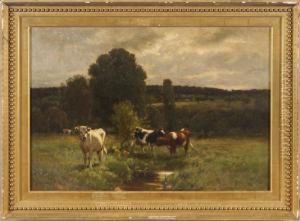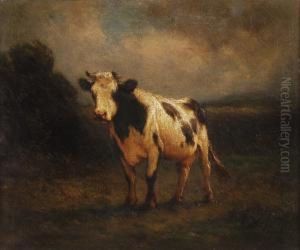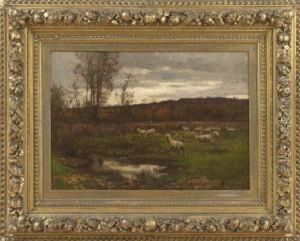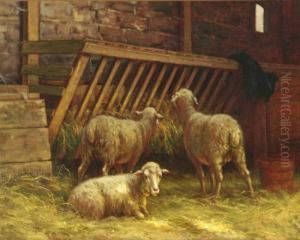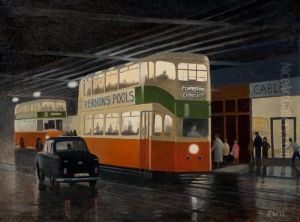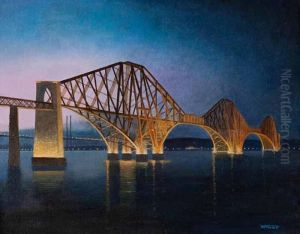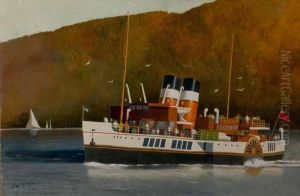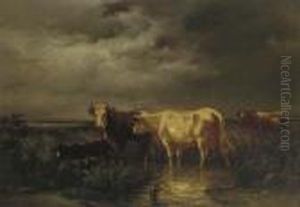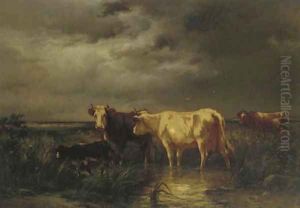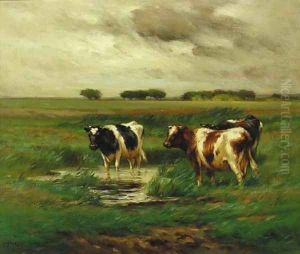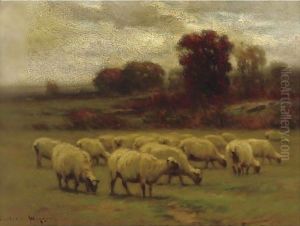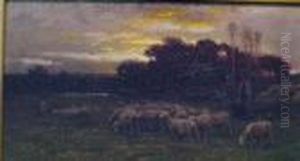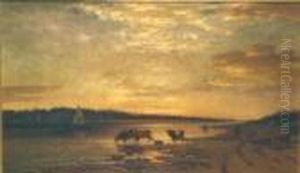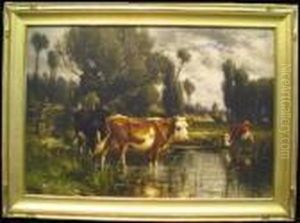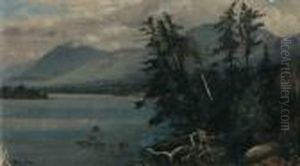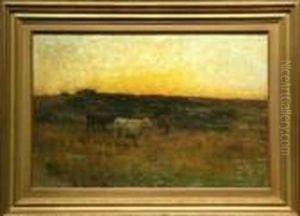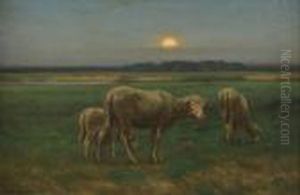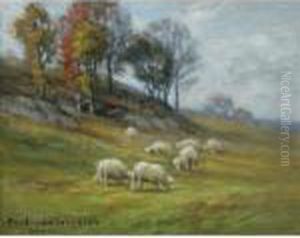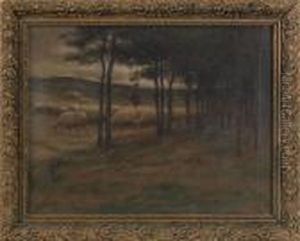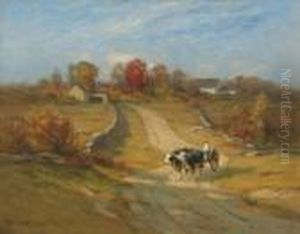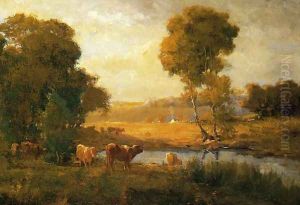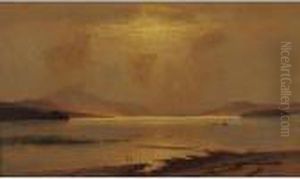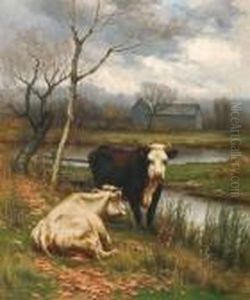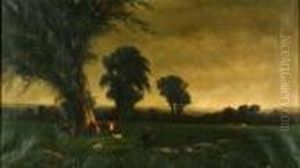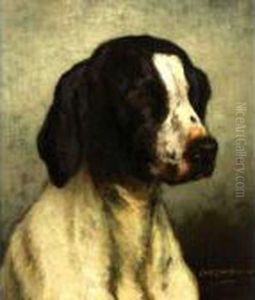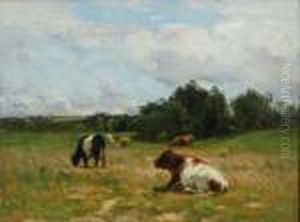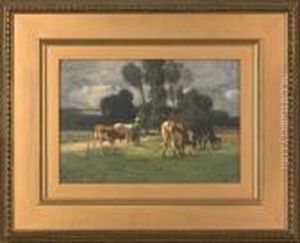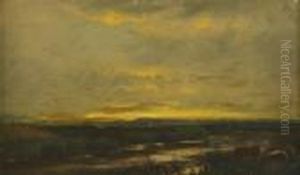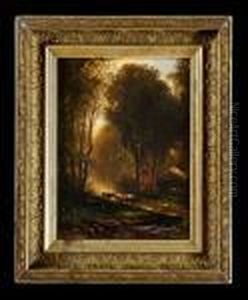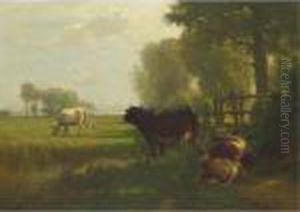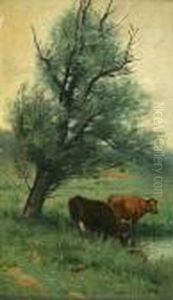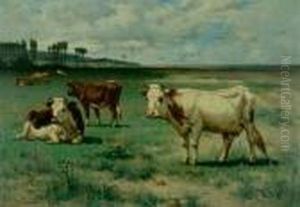John Carleton Wiggins Paintings
John Carleton Wiggins was an American painter known for his pastoral and bucolic landscapes featuring cattle. He was born on July 4, 1848, in Turners, New York, to a family with artistic interests; his father was a decorative painter. Wiggins showed an early propensity for the arts, and this was encouraged by his father, who provided him with his initial training.
Wiggins's style was heavily influenced by the Barbizon School, a group of French painters who emphasized naturalistic and tonal qualities in their work, often focusing on rural scenes. Wiggins adopted a similar approach, painting serene scenes that often included cows and sheep in pastoral settings. He was particularly adept at capturing the varying moods of nature, and his works are characterized by a harmonious palette and a gentle, poetic sense of composition.
In his lifetime, Wiggins achieved moderate success and was a respected member of the art community. He was a member of several art organizations, including the National Academy of Design, where he was elected as an associate in 1890 and became a full academician in 1906. Wiggins was also active in the American Watercolor Society and the Brooklyn Art Association.
Wiggins's work was exhibited widely during his career, including at the National Academy of Design and the Boston Art Club, and he received numerous awards and accolades for his contributions to American art. His paintings are now part of several important museum collections, such as the Metropolitan Museum of Art in New York.
John Carleton Wiggins continued to paint throughout his life and passed away on September 13, 1932, in Old Lyme, Connecticut, where he had spent his later years. He left behind a legacy of tranquil and idyllic landscapes that continue to be appreciated by art lovers and collectors.
